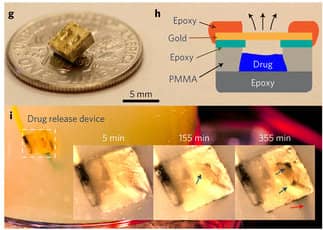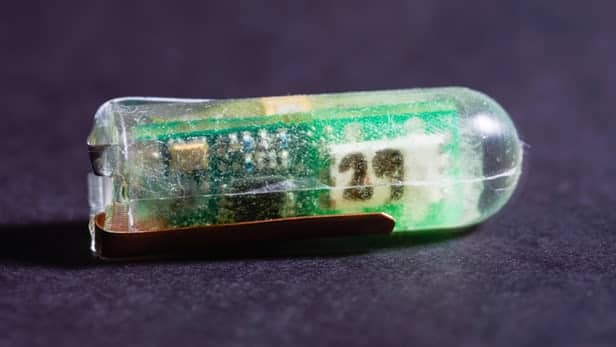Nowadays, the invasive, painful and risky techniques like the colonoscopy or angiography are replaced by tiny, ingestible electronic devices which can be taken in, just like a pill, and can go inside to perform similar operations. But these devices have yet to find a reliable power source when inside the body, where the leaky batteries can’t be trusted, and solar panels won’t work.
Researchers at MIT have come up with a solution that involves providing power to these electronic microbots using acids of the stomach. We now have a cheaper and safer alternative to the available energy sources.
“We need to come up with ways to power these ingestible systems for a long time,” says Traverso. “We see the GI tract as providing a really unique opportunity to house new systems for drug delivery and sensing, and fundamental to these systems is how they are powered.”
The device is built on a famous primary school experiment that demonstrates how electrical power could be generated using lemon’s citric acid as an electrolyte. By sticking pieces of zinc and copper as electrodes to create current; enough power can be generated to light an LED.
The researchers scaled up this project and attached zinc and copper electrodes to the casing of the small, ingestible device which contains a temperature sensor and a 900 MHz transmitter. The acid in the stomach works as an electrolyte to conduct electric current from zinc to copper thus, powering this device.
“A big challenge in implantable medical devices involves managing energy generation, conversion, storage, and utilization,” says Anantha Chandrakasan, senior author of the study. “This work allows us to envision new medical devices where the body itself contributes to energy generation enabling a fully self-sustaining system.”
The method was tested on pigs, where the researchers were able to observe the temperature of the stomach through the data sent wirelessly every 12 seconds up to a distance of 2 m (6.6 ft).
The device’s journey was also tracked, which took about six days to move from the stomach into the intestines. When it entered the small intestine, the lower acidity decreased the effectiveness to about 1 percent of the peak performance. But over large periods of time, the device worked without any issues.

Currently, the prototype is about 40 mm long and 12 mm wide (1.5 x 0.5 in). It uses the power from the electrolyte to release drugs that are encapsulated within the casing of a thin layer of gold. The researchers are now working to reduce the size of the circuit to about a 12mm x 3mm so that it can be used with other sensors to measure a range of vital signs.
“You could have a self-powered pill that would monitor your vital signs from inside for a couple of weeks, and you don’t even have to think about it,” says Philip Nadeau, lead author of the study. “It just sits there making measurements and transmitting them to your phone.”
The findings were published in the journal Nature Biomedical Engineering.
Would you be comfortable in swallowing this type of pill or would you prefer the more tried and tested methods of diagnosis? Comment below!


